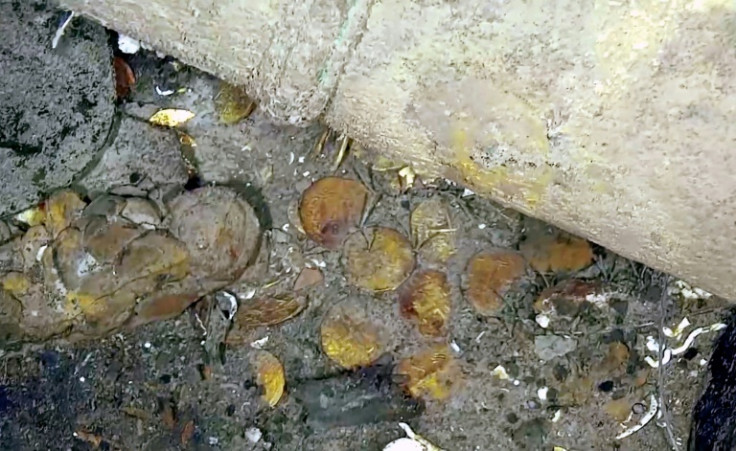
Colombian scientists recovered the first items of an 18 Century shipwreck in the Caribbean sea with a treasure worth billions of dollars, local authorities said.
Concretely, they recovered three coins, a cannon and a porcelain cup. They were all aboard the Spanish galleon San Jose, which was sank in 1708 by an English fleet.
The ship is believed to hold 11 million gold and silver coins, as well as emeralds and more precious cargo. Its ownership is currently being disputed legally, and its location is a Colombian state secret.
The Gustavo Petro administration said the purpose of the current mission is research and not taking the treasure. "This historic event demonstrates the strengthening of the Colombian State's technical, professional, and technological capabilities to protect and promote Underwater Cultural Heritage, as part of Colombian identity and history," said Kadamani Fonrodona, Minister of Cultures, Arts, and Knowledge.
The dispute over the San José galleon and its treasure has been ongoing for decades. The San Jose was travelling from what is now Panama to the port of Cartagena, in Colombia. It was carrying some 600 crew members.
More than 270 years later, in 1982, a U.S. treasure hunting company called Glocca Morra (now SSA) claimed to discover the San José galleon.
It provided the coordinates to the Colombian government, hoping the state would raise the wreck and split the proceeds. However, the two parties failed to reach an agreement on how to divide up the treasure and the ship remained on the seafloor.
The battle was reignited in 2015 when the Colombian state announced it had located the shipwreck in a different area to the coordinates provided by SSA.
The treasure hunting firm continues to claim 50% of the value of the treasure, which it estimates at $10 billion.
The Colombian government, on its end, claims that Glocca Morra never found the shipwreck in the 1980s, and therefore have no rights to the treasure within.
Speaking to The Latin Times in January of this year, Andje's Director of International Defense, Yebrail Haddad, emphasized that the firm provided incorrect coordinates after its original expedition.
"The site reported by the predecessors of Sea Search Armada in 1982 is completely different to the site at which the galleon was effectively discovered in 2015 by the Colombian state," said Haddad.
To prove this argument, the state got the help of a host of maritime experts. The most prominent of these is the Woods Hole Oceanographic Institution, the largest independent oceanographic research institution in the U.S.
The government commissioned a $1.4 million study by Woods Hole to prove that the coordinates offered by Glocca Morra were incorrect.
The institution found that the location provided to the government in 1982 was 10 kilometers away from the ship's actual resting place.
"There will not be room for any type of deal with a 'treasure hunting' company, the perpetrator of a frivolous and abusive claim," said the lawyer.
The Netherlands court dealing with the case is expected to hand down a verdict in November or December.
But even if the dispute is resolved between Colombia and SSA, further legal challenges may lie ahead for the Colombian state.
Other parties have staked a claim to the treasure, including the Spanish government and Indigenous groups.
Spain argues that the treasure remains state property as it belonged to the Spanish state when the galleon sank in 1708.
Meanwhile, multiple Indigenous groups from Bolivia and Peru claim that a part of the contents of the ship belongs to their communities. They argue that the Spanish kingdom looted precious metals from their lands using enslaved Indigenous workers.
© 2025 Latin Times. All rights reserved. Do not reproduce without permission.





